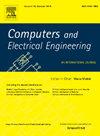Enhanced electric eel foraging algorithm for integrated optimization of distributed generation and distribution static compensators with network reconfiguration
IF 4
3区 计算机科学
Q1 COMPUTER SCIENCE, HARDWARE & ARCHITECTURE
引用次数: 0
Abstract
This research introduces the Enhanced Electric Eel Foraging Optimization (EEEFO) algorithm, a hybrid optimization approach for simultaneously sizing and placing distributed generation (DG) units at optimal power factor, optimizing distribution static compensators (DSC), and performing optimal network reconfiguration (ONR) on large-scale electrical distribution networks. The EEEFO algorithm leverages the electric eel foraging optimizer's skills with genetic operators to address the challenging issues of optimum design of large electrical distribution networks. The primary objective of this study is to minimize power loss and enhance voltage stability of distribution networks. The effectiveness of the EEEFO algorithm is demonstrated through its application to several large distribution networks, including 70-bus, 85-bus, 118-bus, 136-bus, 141-bus, and 415-bus systems. Additionally, the EEEFO algorithm's efficiency is evaluated against other algorithms and previous research in the area. Simulation findings demonstrate the usefulness of optimizing DG at the optimum power factor while also optimizing DSC with ONR to improve power system performance. Specifically, the active power loss is reduced by 80.46 %, 97.00 %, 87.76 %, 88.71 %, 92.14 %, and 82.18 %, while reactive power loss is reduced by 73.62 %, 97.73 %, 87.41 %, 91.92 %, 92.58 %, and 81.22 % for the 70-bus, 85-bus, 118-bus, 136-bus, 141-bus, and 417-bus systems, respectively. Furthermore, this strategy considerably improves the system's voltage stability, demonstrating its usefulness and scalability across a wide range of network topologies.
求助全文
约1分钟内获得全文
求助全文
来源期刊

Computers & Electrical Engineering
工程技术-工程:电子与电气
CiteScore
9.20
自引率
7.00%
发文量
661
审稿时长
47 days
期刊介绍:
The impact of computers has nowhere been more revolutionary than in electrical engineering. The design, analysis, and operation of electrical and electronic systems are now dominated by computers, a transformation that has been motivated by the natural ease of interface between computers and electrical systems, and the promise of spectacular improvements in speed and efficiency.
Published since 1973, Computers & Electrical Engineering provides rapid publication of topical research into the integration of computer technology and computational techniques with electrical and electronic systems. The journal publishes papers featuring novel implementations of computers and computational techniques in areas like signal and image processing, high-performance computing, parallel processing, and communications. Special attention will be paid to papers describing innovative architectures, algorithms, and software tools.
 求助内容:
求助内容: 应助结果提醒方式:
应助结果提醒方式:


